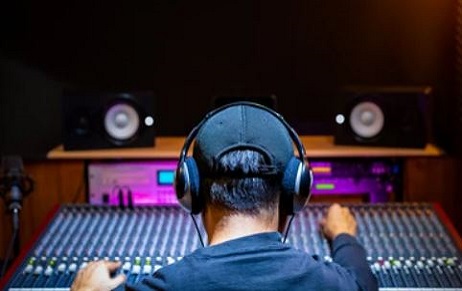A new era started with the innovation of Artificial Intelligence (AI). AI systems can produce…
Impact Of Compulsory Licensing On Music Rights Under Copyright Law
India is a vast country with many different cultures. In India, people follow a variety of traditions, cultures, and religions. Music has long played a significant role in Indian culture. Music in India may be traced from the prehistoric era to the current era, which we commonly associate with film music. Music is an important component of Indian culture, as well as the country is noted for its rich folk and classical music tradition. As a result, compulsory licensing is required to safeguard the rights of owners who originated or wrote such magnificent pieces of music from being exploited in the music industry and to allow their work to be utilized by third parties without jeopardizing their rights.
[Picture Credit: shutterstock]
Initially, this article discusses about the meaning and types of licensing under copyright law. Further it also mentions about the importance of compulsory licensing of a copyrighted work. Mainly this article focuses on the “impact of compulsory licensing on musical rights”.
MEANING OF LICENSING UNDER COPYRIGHT LAW
“World Intellectual Property Organization” defines licensing as, “Licensing is a major aspect of Intellectual property. A licensing agreement is a partnership between an intellectual property rights owner, known as the licensor, and another who is authorized to use such rights, known as the licensee, in exchange for an agreed payment, known as a royalty.”
TYPES OF LICENSING:
- Voluntary license: It is defined by section 30 under the Indian Copyright Act, 1957 (Hereinafter ICA, 1957) as, “the owner of the copyright in any existing work or the potential owner of the copyright in any future work may grant any interest in the right by license in writing signed by him or by a duly authorized agent.”
- Compulsory license: Section 31 of the ICA, 1957 governs compulsory licensing. This is a concept for a statutory license that grants an absolute right to perform an act without the authorization of the copyright holder. Section 31 mandates the license of copyrighted works that have been kept confidentially from the general people or the public.
COMPULSORY LICENSING UNDER COPYRIGHTED WORK:
Compulsory licensing protects the ownership rights by allowing another person to utilize the authorized individual’s work without infringing on their rights. “The copyright board has authority under Section 31(1) of the ICA, 1957 which allows for the compulsory licensing of Indian works. The copyright board may instruct the registrar of copyright to award a license for that specific subject for the payment of remuneration to the holder of copyright after the work has been published under certain satisfactory conditions.”
Case Law:
Entertainment Network (India) Ltd. V. Super Cassette Industries Ltd. (2004) is a landmark case in which, although radio Mirchi was broadcasting songs, Super Cassette contested the rights to them. Around the same moment, it moved for a permanent injunction. The FM broadcasters also sought compulsory licensing underneath the copyright legislation while the lawsuit was still ongoing.
The challenge seems to have been whether giving a compulsory license was feasible at this time, as well as the court stated that compulsory licensing could indeed only be conferred when public availability is rejected, and since the license had already been approved by the AIR as well as Radio City in this case, Radio Mirchi was accountable for copyright violation.
IMPACT OF COMPULSORY LICENSING ON MUSICAL RIGHTS:
Music Licensing:
“It is the authorized use of copyrighted music in public performances. Each time the music is broadcast, a license is obtained from the composer of the music. The copyrighted work’s owner has complete control over its reproduction, distribution, and adaptation. This includes the right to be accepted or denied by the copyrighted work’s owner. This also implies that music which is broadcasted must get a license and pay the fees associated with broadcasting.”
Significance of Music Licensing:
The term “music license” refers to the holder of the music’s “protection and permission for the original work.” It establishes a contractual relationship between the musician as well as the person who wishes to utilize the song.
The advantage of licensing music is that if a piece of music is included in a film or record, the musician can utilize it as a platform to showcase his skill and get recognition. That song’s prominence will naturally rise, and therefore would be in higher demand among listeners. Because of its prominence, the producers of a TV show, commercial, or film will approach the artist to utilize the song, which will result in a benefit for the music’s owner.
Copyright of music works:
The Musical Industry is evolved to get along with the changes in society as dynamism has increased. The introduction of ‘remix’ has been one of the biggest modifications. The beats of the original music are modified in a remix. It’s also possible that certain lyrics in the original work are added or removed. The artist of the new production, but not the old work’s musical artist, should own it. It should be afforded the same level of safeguarding and privileges as other artistic works.
However, ‘Section 51 under The Copyright (Amendment) Act, 2012’ specifies, “Any individual who undertakes an act that infringes the original owner’s copyright without first acquiring a license from the original owner is accused of the violation.”
In Gramophone Co v. Super Cassettes (1998), it was stated that “obtaining the agreement of the original owner of the musical work is critical.” The consent and approval of the plaintiff were necessary to make a recording under Section 52(1)(j) of ICA, 1957, and avoid falling under the category of violation, according to the court. In this situation, an audio tape titled “GANAPATI AARTI ASHTHAVINAYAK GEETE” was created.
The defendant claims to construct a recording of music or sound which includes the recording of original music or sound and agreed to give a license price for it. The plaintiffs refused to comply and gave back the check, indicating that they did not consent to the use of the musical piece. Despite this, the defendants produced their audio recordings. It is thus a violation if it is done without the permission of the original work’s owner.
However, if previous “notice is provided to the holder of the original work, together with the royalties that must be paid in advance, this will not be considered a violation. It will be considered an infringing of rights if it occurs without advance notification to the owner. When new works are introduced to the public, it is necessary to ensure that the identification of the artists is revealed so that the public isn’t misled. The new work shall not be created until two years after the novel work has expired.”
CONCLUSION:
In the sphere of arts, there has been a significant evolution. It has been common practice to adapt a novel towards something new. The issue raises when it is hard to distinguish between original and modification. As a consequence, different difficulties surrounding copyright infringement have arisen. As stated in Section 22 of the ICA, 1957, the copyright protection “with every original work of the author is life plus 60 years after his or her death.”
Notwithstanding the music industry’s criticism of the compulsory license, it could indeed be stated that while the amendment still has some flaws, the long-term benefits of the amendment could indeed be seen because it not only protects the rights of lyricists and composers by giving licensing fees, but it also provides safety and security from copyright violation in the digital world by incorporating sections 65A and 65B of ICA, 1957.
Author: Keerthi Gandreti, a student of NLU, currently doing internship at IIPRD, in case of any queries please contact/write back to us via email [email protected].




